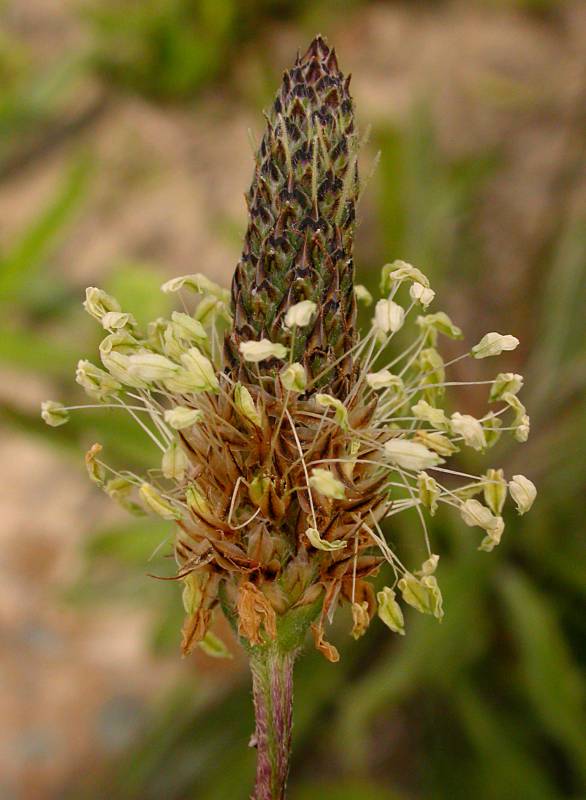Plantago lanceolata
Plantago virginica
English plantain
Leaves all basal, woolly to glabrous, 3- to several-nerved, lance-elliptic, acute, 10-40 cm. long and 1-4 cm. wide.
Inflorescence a dense, bracteate, cylindric spike, 1.5-8 cm. long and 1 cm. wide;
bracts thin, ovate, acuminate; the 4 sepals with strong mid-veins, the outer two united, with separate mid-veins;
corolla lobes 4, 2-2.5 mm. long, spreading or reflexed;
stamens 4, exerted;
ovary superior, 2-celled.
Capsule 3-4 mm. long
Plantago lanceolata
Plantago virginica
Occuring on both sides of the Cascades crest in Washington; Alaska to California, east across North America to the Atlantic Coast; cosmopolitan.
- Local floras:
BC,
CA,
OR,
WA
- Local Web sites:
CalFlora,
CalPhotos,
Flora NW,
PNW Herbaria,
Turner Photog.
WildflowerSearch
iNaturalist (observations)
USDA Plants Database
- LBJ Wildflower Center
- SEINet
- Plants of the World Online
- Encyclopedia of Life
- Wikipedia
- Google Image Search


